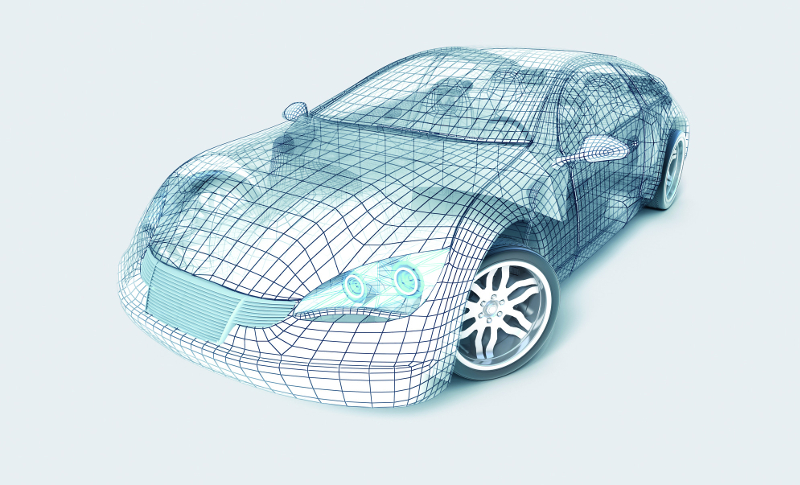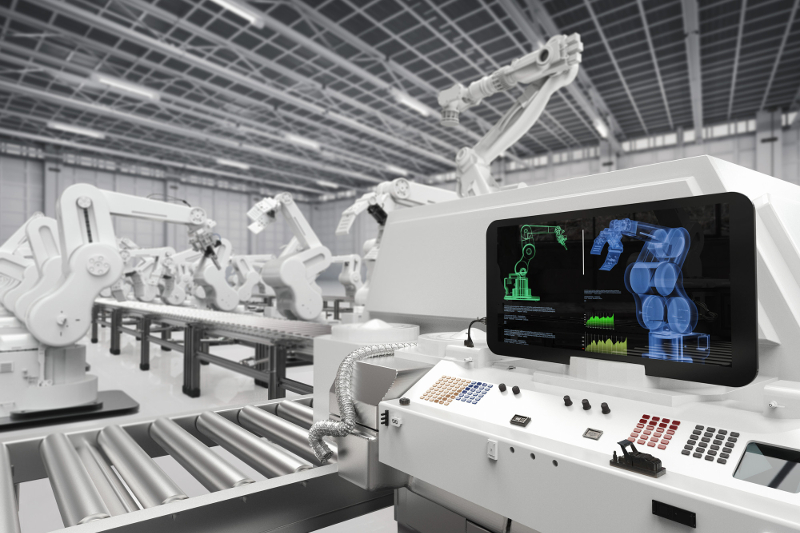After the gold rush is over: blockchain technology perspectives
The public attitude to blockchain technology radically changed last year, when the bitcoin cryptocurrency rate rose from $ 750 in January to $ 20,000 in December 2017. It is not surprising that, in the midst of such a rush, people forgot about the risks associated with cryptocurrency. But the most interesting is waiting for us ahead. In this article we will talk about how blockchain and other new alternative DLT technologies find practical application in the modern world.

Before we begin to discuss the future prospects of cryptocurrencies, let's understand the existing concepts and terms. The blockchain technology was originally created for Bitcoin cryptocurrency, which serves as an alternative to traditional payment systems controlled by governments and banks. The main distinctive feature of this technology is that data is added and stored within the network of nodes as a linear chain without the involvement of the central control authority. New transactions can only be added by network miners.
Miners, in fact, are external data centers that create new blocks and carry out pending transactions. For their part, they receive a material benefit: in the case of transactions, this is a remuneration, the amount of which is set by the sender of the transaction. Each new block is cryptographically connected with the previous block, which makes the block chain unchangeable: any change in one block leads to a change in each subsequent block on each node. Even if the nodes are distributed across the globe, all nodes need to be used to complete the transaction: after the transaction is registered, it cannot be changed.
')
This is what provides a high level of confidence in the technology. The blockchain provides a high level of reliability, which previously could only be guaranteed by traditional paper transaction logbooks (registries). By analogy, the blockchain technology is also often called Distributed Ledger Technology (DLT).
The blockchain technology operates in two modes, depending on the application. The first mode is called "free from restrictions" (or public). He has no control, implies a complete lack of trust between the participants, because any people can take part in it at any time. The second mode is called “controlled”, it has control and limits the actions of the participants. This gives a certain level of trust, which makes it suitable for use by commercial companies.
The range and ambitiousness of projects based on blockchain technology are simply amazing. For example, the authorities of the emirate of Dubai announced their plans to become the first emirate in the world, whose economy will be based on the blockchain technology. Initiatives have been developed in the field of maritime shipping, business registration, medical records and even initiatives aimed at combating the trade in “diamonds mined in military conflict zones”, the profits from the sale of which go to finance criminal gangs.
In the UK, the government is considering using blockchain technology to pay state benefits as part of the Govcoin project. In the retail sector, as part of the OpenBazaar project, it is planned to create a decentralized market in which manufacturers and buyers will exchange goods without intermediaries. Kodak announced the development of a system for tracking payments to photographers for intellectual property rights. A similar initiative, called Ujomusic , is being developed to protect the rights of musicians and composers. In the field of medicine, the Gem project is being implemented, the goal of which is to transfer data on outbreaks of epidemics to the blockchain, which will help increase the effectiveness of disease control.
There are examples of commercial use of DLT. Bosch is considering using this technology to increase confidence and protect data for car mileage counters. Mileage fraud is a serious global problem, but through the development of Bosch, mileage data will be regularly sent to a decentralized global database. Their authenticity is verified using special certificates. Airbus plans to use blockchain technology as a common database of suppliers to track quality and product compliance at all stages of the supply chain.

These are just a few cases that clearly demonstrate that the use of the blockchain is not limited to currencies.
The blockchain technology has two serious limitations that prevent it from being used for absolutely all commercial and government processes. The first limitation is the mining process. In the example with bitcoin, we are talking about how a unit of this cryptocurrency is created. The creation algorithm was designed in such a way that there was a certain limit of cryptocurrency units issued, beyond which no additional currency could be created. And as we get closer to this limit, it becomes more difficult. This requires more and more computing power, which limits the ability of people to participate in this process, because not all miners have the necessary amount of computing resources for data processing.
The second limitation is transaction processing speed. Platforms such as Bitcoin can only process a limited number of financial transactions. If we think about the one-time volume and speed of retail throughout the world, it becomes obvious that any blockchain business solution should process thousands of transactions per second. For example, the Visa transaction processing rate is limited to 56,000 per second. Bitcoin transaction processing speed is much lower, because for their verification requires a large amount of data, the so-called "proof of work performance". The actual transaction processing speed of the TPS platform varies depending on the current circumstances, but still remains low in terms of commercial use.
For companies that want to create private (controlled) blockchains, there are workarounds that can increase the speed of transaction processing. For example, it is possible to reduce the amount of computational resources per transaction by changing the computation algorithm for a private blockchain, maximizing the number of concurrent transactions. However, as a result, the level of protection will decrease and the blockchain will easily be unauthorizedly changed. Even if this is possible for organizations with trusted participants, this option is not suitable for companies that need confirmation of the absolute immutability of data. Recall the example of Bosch and its mileage monitoring system: if Bosch had simplified the blockchain algorithm in order to simplify it in terms of computational complexity, the compiled database would lose confidence, which would negatively affect the company's reputation.
Given these limitations, it is logical to assume that organizations should develop solutions that would eliminate the drawbacks of the blockchain. One of these developments was the IOTA project, implemented by the IOTA foundation not on the basis of the blockchain technology, but on the basis of a technology called Tangle. Despite the fact that Tangle technology is sometimes called the next generation blockchain technology, this is not the case.
Tangle links transactions as a network (or plexus), and not as a linear chain, as it is implemented in blockchain technology. Tangle is based on a concept that allows participants to verify nearby transactions. This allows you to reduce the cost of transactions (transaction fees are absent completely) and increase their processing speed - the more activity will be within the network, the faster they will be confirmed. All this allows for secure storage of information. Miners are not required for IOTA, since IOTA tokens have already been created. Due to the exceptionally low level of delay (their almost complete absence with a certain number of participants in the process) and new additional technologies (including Masked Authenticated Messaging (MAM) technology), development is of considerable interest for the economy.

Other projects are being implemented to solve problems with the scalability and high cost of the blockchain technology, including the new Lightning Network (Bitcoin) technology, which is currently being tested. Fujitsu is involved in the development of new technology Hyperledger Fabric. The project is implemented within the framework of the Linux consortium. Hyperledger is a controlled network, all participants are known. This greatly simplifies the approval mechanism, which allows speeds to be increased to 1,000 transactions per second and makes the product suitable for commercial use. The goal of Hyperledger Fabric is to create a blockchain-based platform for all industries with the functionality needed by the corporate sector. The new development supports automation functions through flexible smart contracts and various tools and utilities for efficient future development and maintenance. Automation functions, which are the main distinguishing feature of the Hyperledger Fabric technology, are implemented using Chaincode (a smart contract written in the Go programming language). This smart contract uses logic agreed upon by all network participants. All this makes Hyperledger a more viable basis for creating new business models with the possibility of commercial use.
In order to make the blockchain technology more accessible and not to force companies to develop their own similar solutions, Fujitsu plans to provide the Fujitsu Enterprise Blockchain Service (FEBS), ready to use “blockchain as a service,” based on Fujitsu Cloud Service K5. Unlike other vendors, when using FEBS, customers do not need to develop their own smart contract implementation functions. This allows them to focus on developing their own applications.

In addition, Fujitsu offers a new service Proof of Business. This is a universal consultation service that allows you to test solutions based on blockchain technology, as well as quickly and with less risk to bring to the market new and promising models for using the blockchain. The Fujitsu 360 Degree Blockchain Consulting service checks the architecture, commercial and legal aspects, potential risks and the Blockchain code itself, helping businesses to move from possible usage scenarios to ready-made blockchain solutions.
Fujitsu Intelligent Data Service Virtuora DX Data Distribution and Utilization Service is a cloud service that helps companies analyze the value of their data and speed up collaborative development across multiple industries.
Virtuora DX includes the Fujitsu VPX technology, which extends the functionality of the blockchain technology for exchanging data between companies without placing information in external environments. By storing the data in their own data centers, companies and other data providers register it with a consortium of Virtuora DX members who have joined together to share data.
In addition to the identifier for the data and attribute information, registration takes place in the form of a Data Jacket model. It includes data describing, including the content and methods used in its collection. A registered data packet is provided for sharing in a consortium. At the same time, the links between the corresponding data are displayed, which stimulates the project participants to work together and create new services.
Fujitsu offers the Trusted Instance service, which allows in practice to realize the full potential of DLT technology. The concept of the Trusted Instance service is that the customer sends (only once) the initial unit (the so-called “primary unit”) to Fujitsu. Each subsequent transaction is also sent to Fujitsu. Fujitsu's computational resources are used for the full functioning of the blockchain and serve as a private register.
Whatever happens in the ever-changing world of cryptocurrencies, DLT technologies, including the blockchain and Tangle, will have an increasing effect on business. The possibility of a fundamental change in the value chain becomes possible only because of such initiatives as OpenBazaar. Services that are currently being implemented through intermediaries will become invisible, automatic and free in the future. The likelihood of combining smart contracts and automatic payment systems within the Internet of Things opens up new perspectives. The initial fever may have ended. But now we are starting to discover the full potential of DLT technology.

Article author: Udo Würtz (Udo Würtz), Honored Engineer of the company and director of business development solutions for Fujitsu data center in the EMEIA region.

Before we begin to discuss the future prospects of cryptocurrencies, let's understand the existing concepts and terms. The blockchain technology was originally created for Bitcoin cryptocurrency, which serves as an alternative to traditional payment systems controlled by governments and banks. The main distinctive feature of this technology is that data is added and stored within the network of nodes as a linear chain without the involvement of the central control authority. New transactions can only be added by network miners.
Miners, in fact, are external data centers that create new blocks and carry out pending transactions. For their part, they receive a material benefit: in the case of transactions, this is a remuneration, the amount of which is set by the sender of the transaction. Each new block is cryptographically connected with the previous block, which makes the block chain unchangeable: any change in one block leads to a change in each subsequent block on each node. Even if the nodes are distributed across the globe, all nodes need to be used to complete the transaction: after the transaction is registered, it cannot be changed.
')
This is what provides a high level of confidence in the technology. The blockchain provides a high level of reliability, which previously could only be guaranteed by traditional paper transaction logbooks (registries). By analogy, the blockchain technology is also often called Distributed Ledger Technology (DLT).
The blockchain technology operates in two modes, depending on the application. The first mode is called "free from restrictions" (or public). He has no control, implies a complete lack of trust between the participants, because any people can take part in it at any time. The second mode is called “controlled”, it has control and limits the actions of the participants. This gives a certain level of trust, which makes it suitable for use by commercial companies.
New applications for blockchain technology
The range and ambitiousness of projects based on blockchain technology are simply amazing. For example, the authorities of the emirate of Dubai announced their plans to become the first emirate in the world, whose economy will be based on the blockchain technology. Initiatives have been developed in the field of maritime shipping, business registration, medical records and even initiatives aimed at combating the trade in “diamonds mined in military conflict zones”, the profits from the sale of which go to finance criminal gangs.
In the UK, the government is considering using blockchain technology to pay state benefits as part of the Govcoin project. In the retail sector, as part of the OpenBazaar project, it is planned to create a decentralized market in which manufacturers and buyers will exchange goods without intermediaries. Kodak announced the development of a system for tracking payments to photographers for intellectual property rights. A similar initiative, called Ujomusic , is being developed to protect the rights of musicians and composers. In the field of medicine, the Gem project is being implemented, the goal of which is to transfer data on outbreaks of epidemics to the blockchain, which will help increase the effectiveness of disease control.
There are examples of commercial use of DLT. Bosch is considering using this technology to increase confidence and protect data for car mileage counters. Mileage fraud is a serious global problem, but through the development of Bosch, mileage data will be regularly sent to a decentralized global database. Their authenticity is verified using special certificates. Airbus plans to use blockchain technology as a common database of suppliers to track quality and product compliance at all stages of the supply chain.

These are just a few cases that clearly demonstrate that the use of the blockchain is not limited to currencies.
Strengths may have disadvantages
The blockchain technology has two serious limitations that prevent it from being used for absolutely all commercial and government processes. The first limitation is the mining process. In the example with bitcoin, we are talking about how a unit of this cryptocurrency is created. The creation algorithm was designed in such a way that there was a certain limit of cryptocurrency units issued, beyond which no additional currency could be created. And as we get closer to this limit, it becomes more difficult. This requires more and more computing power, which limits the ability of people to participate in this process, because not all miners have the necessary amount of computing resources for data processing.
The second limitation is transaction processing speed. Platforms such as Bitcoin can only process a limited number of financial transactions. If we think about the one-time volume and speed of retail throughout the world, it becomes obvious that any blockchain business solution should process thousands of transactions per second. For example, the Visa transaction processing rate is limited to 56,000 per second. Bitcoin transaction processing speed is much lower, because for their verification requires a large amount of data, the so-called "proof of work performance". The actual transaction processing speed of the TPS platform varies depending on the current circumstances, but still remains low in terms of commercial use.
For companies that want to create private (controlled) blockchains, there are workarounds that can increase the speed of transaction processing. For example, it is possible to reduce the amount of computational resources per transaction by changing the computation algorithm for a private blockchain, maximizing the number of concurrent transactions. However, as a result, the level of protection will decrease and the blockchain will easily be unauthorizedly changed. Even if this is possible for organizations with trusted participants, this option is not suitable for companies that need confirmation of the absolute immutability of data. Recall the example of Bosch and its mileage monitoring system: if Bosch had simplified the blockchain algorithm in order to simplify it in terms of computational complexity, the compiled database would lose confidence, which would negatively affect the company's reputation.
Blockchain technology alternatives
Given these limitations, it is logical to assume that organizations should develop solutions that would eliminate the drawbacks of the blockchain. One of these developments was the IOTA project, implemented by the IOTA foundation not on the basis of the blockchain technology, but on the basis of a technology called Tangle. Despite the fact that Tangle technology is sometimes called the next generation blockchain technology, this is not the case.
Tangle links transactions as a network (or plexus), and not as a linear chain, as it is implemented in blockchain technology. Tangle is based on a concept that allows participants to verify nearby transactions. This allows you to reduce the cost of transactions (transaction fees are absent completely) and increase their processing speed - the more activity will be within the network, the faster they will be confirmed. All this allows for secure storage of information. Miners are not required for IOTA, since IOTA tokens have already been created. Due to the exceptionally low level of delay (their almost complete absence with a certain number of participants in the process) and new additional technologies (including Masked Authenticated Messaging (MAM) technology), development is of considerable interest for the economy.

Other projects are being implemented to solve problems with the scalability and high cost of the blockchain technology, including the new Lightning Network (Bitcoin) technology, which is currently being tested. Fujitsu is involved in the development of new technology Hyperledger Fabric. The project is implemented within the framework of the Linux consortium. Hyperledger is a controlled network, all participants are known. This greatly simplifies the approval mechanism, which allows speeds to be increased to 1,000 transactions per second and makes the product suitable for commercial use. The goal of Hyperledger Fabric is to create a blockchain-based platform for all industries with the functionality needed by the corporate sector. The new development supports automation functions through flexible smart contracts and various tools and utilities for efficient future development and maintenance. Automation functions, which are the main distinguishing feature of the Hyperledger Fabric technology, are implemented using Chaincode (a smart contract written in the Go programming language). This smart contract uses logic agreed upon by all network participants. All this makes Hyperledger a more viable basis for creating new business models with the possibility of commercial use.
Increased availability of blockchain technology
In order to make the blockchain technology more accessible and not to force companies to develop their own similar solutions, Fujitsu plans to provide the Fujitsu Enterprise Blockchain Service (FEBS), ready to use “blockchain as a service,” based on Fujitsu Cloud Service K5. Unlike other vendors, when using FEBS, customers do not need to develop their own smart contract implementation functions. This allows them to focus on developing their own applications.

In addition, Fujitsu offers a new service Proof of Business. This is a universal consultation service that allows you to test solutions based on blockchain technology, as well as quickly and with less risk to bring to the market new and promising models for using the blockchain. The Fujitsu 360 Degree Blockchain Consulting service checks the architecture, commercial and legal aspects, potential risks and the Blockchain code itself, helping businesses to move from possible usage scenarios to ready-made blockchain solutions.
New technology Virtuora DX
Fujitsu Intelligent Data Service Virtuora DX Data Distribution and Utilization Service is a cloud service that helps companies analyze the value of their data and speed up collaborative development across multiple industries.
Virtuora DX includes the Fujitsu VPX technology, which extends the functionality of the blockchain technology for exchanging data between companies without placing information in external environments. By storing the data in their own data centers, companies and other data providers register it with a consortium of Virtuora DX members who have joined together to share data.
In addition to the identifier for the data and attribute information, registration takes place in the form of a Data Jacket model. It includes data describing, including the content and methods used in its collection. A registered data packet is provided for sharing in a consortium. At the same time, the links between the corresponding data are displayed, which stimulates the project participants to work together and create new services.
Fujitsu offers the Trusted Instance service, which allows in practice to realize the full potential of DLT technology. The concept of the Trusted Instance service is that the customer sends (only once) the initial unit (the so-called “primary unit”) to Fujitsu. Each subsequent transaction is also sent to Fujitsu. Fujitsu's computational resources are used for the full functioning of the blockchain and serve as a private register.
Blockchain technology is becoming an integral part of business
Whatever happens in the ever-changing world of cryptocurrencies, DLT technologies, including the blockchain and Tangle, will have an increasing effect on business. The possibility of a fundamental change in the value chain becomes possible only because of such initiatives as OpenBazaar. Services that are currently being implemented through intermediaries will become invisible, automatic and free in the future. The likelihood of combining smart contracts and automatic payment systems within the Internet of Things opens up new perspectives. The initial fever may have ended. But now we are starting to discover the full potential of DLT technology.

Article author: Udo Würtz (Udo Würtz), Honored Engineer of the company and director of business development solutions for Fujitsu data center in the EMEIA region.
Source: https://habr.com/ru/post/420277/
All Articles